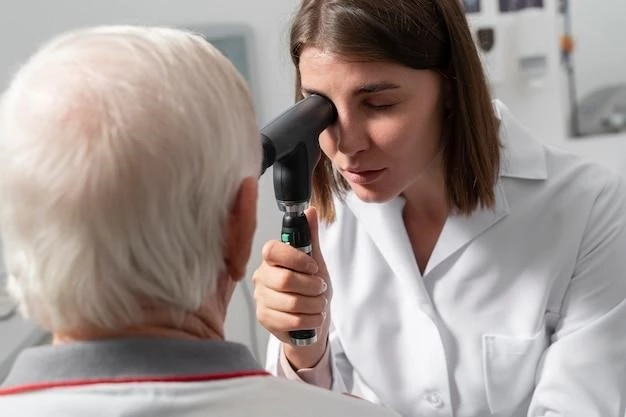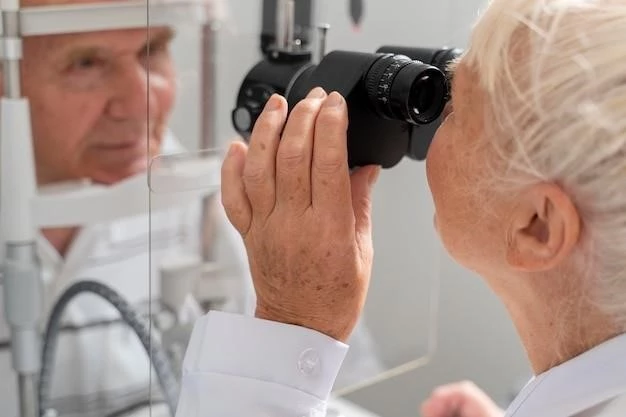Keratoacanthoma Disease
Keratoacanthoma is a common skin lesion characterized by a rapid growth of a benign tumor. This article provides an in-depth analysis of the disease‚ including its diagnosis‚ treatment options such as surgery excision‚ and the impact of sun exposure on its development.
I. Introduction to Keratoacanthoma
Keratoacanthoma is a relatively common skin lesion that presents as a dome-shaped growth on sun-exposed areas. It is considered a benign tumor‚ often arising on the face‚ hands‚ or forearms. While typically fast-growing‚ keratoacanthomas can reach a certain size and then stabilize before regressing on their own. However‚ in some cases‚ they may persist or recur. These lesions can resemble squamous cell carcinoma‚ a type of skin cancer‚ hence the importance of proper diagnosis by a dermatologist. Understanding the characteristics of keratoacanthoma‚ its growth patterns‚ and distinguishing it from other skin conditions like squamous cell carcinoma is crucial for effective management and treatment. Biopsy is often necessary to confirm the diagnosis‚ followed by appropriate treatment depending on the individual case. Early detection and intervention can prevent complications‚ recurrence‚ and ensure optimal cosmetic outcomes post-treatment. This section aims to provide a foundational understanding of keratoacanthoma‚ its clinical presentation‚ and the significance of timely medical evaluation by a healthcare professional to guide appropriate management decisions.
II. Understanding the Growth of Keratoacanthoma
The growth of keratoacanthoma is characterized by its rapid development into a dome-shaped nodule or lesion on the skin. This growth phase is often accompanied by a central keratin plug and a surrounding raised border. While keratoacanthomas can enlarge quickly over a few weeks to months‚ they typically reach a certain size and then stabilize before spontaneously regressing. The exact mechanism behind this growth pattern is not fully elucidated‚ but it is believed to involve rapid proliferation of cells within the hair follicle or oil gland duct. Understanding the growth dynamics of keratoacanthoma is essential for distinguishing it from other skin conditions‚ particularly squamous cell carcinoma‚ and guiding appropriate treatment decisions. Dermatologists rely on these growth patterns‚ coupled with clinical examination and often biopsy results‚ to confirm the diagnosis of keratoacanthoma and devise an effective management plan tailored to the individual’s needs. Monitoring the growth trajectory of keratoacanthomas‚ recognizing any signs of atypical growth or recurrence‚ and timely intervention are key components in ensuring optimal outcomes for patients affected by this benign skin tumor.
III. Diagnosis and Treatment of Keratoacanthoma
Diagnosing keratoacanthoma involves a thorough clinical examination by a dermatologist‚ often followed by a skin biopsy to confirm the diagnosis. Treatment options for keratoacanthoma include observation‚ surgical excision‚ cryotherapy‚ curettage‚ laser therapy‚ or topical medications. The choice of treatment depends on various factors such as the lesion’s size‚ location‚ and the individual’s overall health. Surgical excision is a common treatment approach‚ particularly for larger or persistent keratoacanthomas; This procedure involves removing the lesion and a margin of surrounding healthy tissue to ensure complete eradication of the tumor. Adverse cosmetic outcomes such as scarring can occur with any treatment modality and should be discussed with the patient beforehand. Regular follow-up after treatment is essential to monitor for recurrence and ensure optimal healing. The collaborative effort between dermatologists and patients in the diagnosis‚ treatment‚ and post-treatment care of keratoacanthoma is fundamental in achieving successful outcomes while prioritizing both the medical and cosmetic aspects of care.
IV. Recurrence and Complications
Despite being considered benign‚ keratoacanthomas can recur in some cases. Factors such as incomplete removal of the lesion‚ genetic predisposition‚ or sun exposure may contribute to recurrence. Additionally‚ complications such as scarring‚ infection‚ or changes in skin pigmentation can arise following treatment. Close monitoring during follow-up visits is crucial to detect any signs of recurrence early and intervene promptly. Dermatologists may recommend regular skin checks and sun protection practices to minimize the risk of recurrence and complications; Education on self-monitoring for any new or changing skin lesions is also essential for patients to promptly report any concerning changes to their healthcare provider. By addressing potential risk factors and staying vigilant in monitoring for recurrence and complications‚ healthcare professionals and patients can work together to manage keratoacanthoma effectively and optimize long-term outcomes.
V. Differentiating Keratoacanthoma from Squamous Cell Carcinoma

Distinguishing between keratoacanthoma and squamous cell carcinoma is essential due to their overlapping clinical features. While keratoacanthomas are typically benign‚ squamous cell carcinomas are malignant skin cancers. Dermatologists rely on various factors such as the lesion’s growth pattern‚ size‚ depth of invasion‚ and cellular characteristics to differentiate between the two. Keratoacanthomas often have a rapid growth phase followed by stabilization and regression‚ while squamous cell carcinomas tend to be more aggressive and invasive. Biopsy and histopathological analysis play a crucial role in confirming the diagnosis and guiding appropriate treatment; Given the potential for misdiagnosis and the differing implications for patient care‚ accurate differentiation between keratoacanthoma and squamous cell carcinoma is paramount. Healthcare providers must have a high index of suspicion for skin malignancies and perform thorough evaluations to ensure timely and accurate management of these skin lesions.
VI. Prevention of Keratoacanthoma
Prevention strategies for keratoacanthoma primarily revolve around minimizing sun exposure and practicing sun protection measures. Since ultraviolet (UV) radiation is a significant risk factor for the development of skin lesions‚ including keratoacanthomas‚ it is essential to limit exposure to the sun‚ especially during peak hours. This can be achieved by seeking shade‚ wearing protective clothing such as hats and long sleeves‚ and applying broad-spectrum sunscreen with a high Sun Protection Factor (SPF). Regular skin checks to monitor for any new or changing lesions and seeking prompt medical evaluation for suspicious growths are also crucial preventive measures. Dermatologists often recommend annual skin screenings‚ particularly for individuals with a history of skin cancer or multiple risk factors. By adopting sun-safe practices‚ staying vigilant about changes in the skin‚ and seeking regular dermatologic evaluations‚ individuals can reduce their risk of developing keratoacanthomas and other sun-related skin conditions.
VII. Monitoring and Follow-Up Care
Regular monitoring and follow-up care are essential components of managing keratoacanthoma to ensure optimal outcomes and detect any recurrence or complications early. After treatment‚ patients should schedule follow-up appointments with their dermatologist as recommended. During these visits‚ the healthcare provider will assess the treated area‚ monitor healing progress‚ and evaluate for any signs of recurrence. Patients play a critical role in self-monitoring for changes in the treated area or the development of new lesions. Any concerns or abnormalities should be promptly reported to the healthcare team for evaluation. In addition to clinical assessments‚ dermatologists may recommend periodic skin checks to monitor for new lesions elsewhere on the body and provide guidance on sun protection practices. By adhering to the recommended follow-up schedule‚ staying vigilant about changes in the skin‚ and actively engaging in self-monitoring‚ individuals can collaborate with their healthcare providers to effectively manage keratoacanthoma and maintain skin health in the long term.
VIII. Surgical Excision as a Treatment Option
Surgical excision is a common and effective treatment option for keratoacanthoma‚ particularly in cases where the lesion is large‚ persistent‚ or located in cosmetically sensitive areas. The procedure involves surgically removing the entire lesion along with a margin of surrounding healthy tissue to reduce the risk of recurrence. Dermatologists perform surgical excision under local anesthesia in an outpatient setting. The excised tissue is typically sent for pathological examination to confirm complete removal of the tumor. While surgical excision is generally well-tolerated‚ potential risks include scarring‚ infection‚ and changes in skin pigmentation. Patients should follow post-operative care instructions provided by their healthcare team to promote optimal healing and reduce the risk of complications. Regular follow-up visits are essential to monitor the surgical site‚ evaluate healing progress‚ and detect any signs of recurrence. By collaborating with dermatologists and adhering to post-operative care guidelines‚ patients can undergo surgical excision as a safe and effective treatment for keratoacanthoma while minimizing potential risks and ensuring favorable long-term outcomes.
IX. Impact of Sun Exposure on Keratoacanthoma Development
Sun exposure plays a significant role in the development of keratoacanthoma‚ with UV radiation contributing to the initiation and progression of these skin lesions. Prolonged or intense sun exposure‚ particularly without adequate protection‚ can increase the risk of developing keratoacanthomas on sun-exposed areas of the body. UV radiation can damage the DNA in skin cells‚ leading to mutations that may contribute to the formation of these benign tumors. Individuals with a history of significant sun exposure‚ outdoor occupation‚ or a tendency to sunburn easily are at higher risk of keratoacanthoma development. Practicing sun-safe behaviors such as wearing sunscreen‚ seeking shade‚ and wearing protective clothing can help reduce the impact of UV radiation on the skin and lower the risk of developing keratoacanthomas. By raising awareness about the relationship between sun exposure and skin health‚ individuals can take proactive steps to protect their skin and minimize the risk of developing keratoacanthomas associated with UV exposure.
X. Cosmetic Outcome after Keratoacanthoma Treatment
The cosmetic outcome following keratoacanthoma treatment is a key consideration for both healthcare providers and patients. While the primary goal of treatment is to ensure complete removal of the lesion and reduce the risk of recurrence‚ the potential impact on cosmetic appearance should also be addressed. Surgical excision‚ cryotherapy‚ and other treatment modalities may result in scarring‚ changes in skin pigmentation‚ or textural irregularities at the treatment site. Dermatologists strive to minimize cosmetic implications by carefully planning the treatment approach‚ considering aesthetic factors‚ and optimizing wound healing techniques. Patients should be informed about potential cosmetic outcomes prior to treatment to set realistic expectations. Post-treatment care‚ such as proper wound care‚ sun protection‚ and follow-up visits‚ can contribute to a more favorable cosmetic result. Managing patient concerns related to cosmetic outcomes with empathy and providing guidance on skincare and scar management are essential components of comprehensive keratoacanthoma care. By addressing cosmetic considerations alongside medical treatment‚ healthcare providers can support patients in achieving both optimal physical and aesthetic outcomes following keratoacanthoma treatment.
XI. Conclusion
In conclusion‚ keratoacanthoma is a common benign skin lesion that requires careful diagnosis‚ appropriate treatment‚ and diligent follow-up care. Understanding the growth patterns‚ distinguishing keratoacanthoma from squamous cell carcinoma‚ and addressing the impact of sun exposure are critical aspects of managing this condition effectively. Dermatologists play a pivotal role in diagnosing keratoacanthoma‚ recommending personalized treatment options such as surgical excision‚ and monitoring for recurrence and complications. By emphasizing prevention strategies such as sun protection and regular skin checks‚ individuals can reduce their risk of developing keratoacanthomas. The cosmetic outcome following treatment is a significant consideration‚ necessitating a balance between complete lesion removal and aesthetic concerns. Collaborative efforts between healthcare providers and patients are vital in ensuring successful outcomes and long-term skin health. By staying informed‚ proactive‚ and engaged in their care‚ individuals can navigate the challenges associated with keratoacanthoma while prioritizing both medical and cosmetic aspects for optimal well-being.
